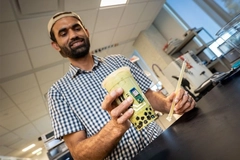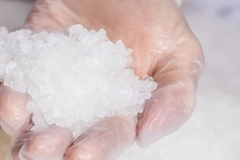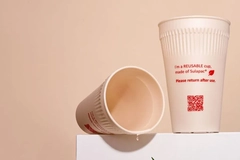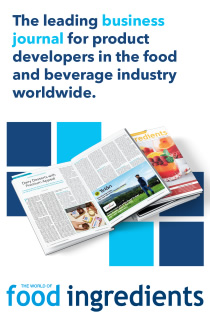Food packaging trends: Global sustainable innovation
Explore the latest biodegradable food packaging solutions, including plant-based extracts and patents

Sustainable food packaging is increasingly important as consumers demand eco-friendly and responsible solutions. Packaging waste contributes significantly to environmental challenges, prompting the need for alternatives that reduce carbon footprints and minimize plastic pollution.
Innova Market Insights’ Innova360 research into sustainable food packaging explores innovations in natural extracts, biodegradable materials, and advanced technologies, influencing food packaging.
The research includes patents on natural extracts, cellulose-based materials, novel alternatives that meet the growing global demand, and the future direction of sustainable food packaging.
Top packaging patent holders
Consumers show growing interest in sustainability and demand for eco-friendly packaging. This demand has led to an increase of 17% CAGR in patent publications on natural extract food packaging over the past four years.
 Patent publications on natural extracts in food packaging have increased significantly in recent years.Packaging companies lead in the patent contributions, with Tetra Laval Group as the top contributor globally. Other notable patent holders include Huhtamaki Packaging Company, Novamont Spa, Miyoshi Yushi K.K., Jiangnan University, Qilu University of Technology, Nestlé SA, Mitsubishi Group, Wuhan Polytechnic University, and Shanghai University.
Patent publications on natural extracts in food packaging have increased significantly in recent years.Packaging companies lead in the patent contributions, with Tetra Laval Group as the top contributor globally. Other notable patent holders include Huhtamaki Packaging Company, Novamont Spa, Miyoshi Yushi K.K., Jiangnan University, Qilu University of Technology, Nestlé SA, Mitsubishi Group, Wuhan Polytechnic University, and Shanghai University.
Tetra Laval focuses on cellulose-based substrates that offer effective gas barrier properties, making them ideal for liquid food packaging. Companies like Nestlé SA and research institutions like Jiangnan University deliver natural extract-based food packaging patents. The rise in patent filing from food companies indicates their commitment to sustainable solutions.
Tetra packaging trends
Tetra Top by Tetra Laval offers aseptic packaging for beverages, such as milk and fruit juices. The company features a plant-based top and cap, with the top containing 94% renewable content, which reduces carbon footprint by 37% compared to standard packaging.
The company’s material maintains the stability and mechanical properties of the packaging while being cost-effective. These sustainable solutions suit eco-conscious consumers, catering to both at-home and on-the-go use.
Packaging patent trends
Key areas in food packaging patents are shelf life, cellulose fiber, packaging film, food products, and composite materials. Tetra Laval leads patent contributions with a focus on cellulose-based substrates for liquid food packaging.
Tetra Laval leads patent contributions with a focus on cellulose-based substrates for liquid food packaging.
The patents highlight the use of plant-based or biodegradable polymeric substances in food packaging. These substances help extend the shelf life of perishable foods, control food contamination with antioxidant properties, and act as a gas barrier system for oxygen-sensitive products.
Natural extract and technology in food packaging
Researchers and FMCG brands continue to explore sustainable material options, such as areca leaf and rosemary extract, for food packaging. During high-pressure processing, areca leaves achieve sustainability with characteristics like single-use disposability, 100% biodegradability, compostability, chemical-free composition, and heat resistance up to 250 degrees. These properties make them ideal for storing food, including liquid products like soups and ketchup.
Artificial intelligence (AI) and sensors track the freshness of food in real time, offering time and temperature indications. This intelligent packaging, integrated with antimicrobial or antioxidant agents, interacts with food and improves its quality, safety, and shelf life.
What’s next in food packaging trends?
Consumer demand for biodegradable and sustainable food packaging is paving the way toward a greener future. Brands can utilize biodegradable polymers in packaging that help mitigate plastic waste and extend food shelf life while adding creative functionality and aesthetics.
 AI and sensors in packaging track temperature and expiry in real-time.Brands can launch packaging materials with natural extract nanoparticles like cellulose nanoparticles, which, when combined with antibacterial agents, offer sterilization properties to packaging to extend shelf life and ensure fresher food.
AI and sensors in packaging track temperature and expiry in real-time.Brands can launch packaging materials with natural extract nanoparticles like cellulose nanoparticles, which, when combined with antibacterial agents, offer sterilization properties to packaging to extend shelf life and ensure fresher food.
Smart packaging innovation, including cost-effective yet advanced sensor integration that tracks real-time conditions, like humidity or expiry, can fulfill the growing demand for sustainable packaging.
Brands can also tap into and expand the potential of edible packaging. Edible packaging can cater to taste and dietary preferences, incorporating diverse flavors or fortified nutrients. These qualities can elevate the consumer experience while aligning with health and wellness goals.
Sustainable food packaging trends continuously evolve, driven by innovation, collaboration, and consumer awareness. With advancements in technology and design, brands are likely to turn the food packaging landscape toward a more sustainable and practical future.
This article is based on the Innova Market Insights report, “Trending in Patents for Sustainable Food Packaging with Natural Extracts — Global.”














